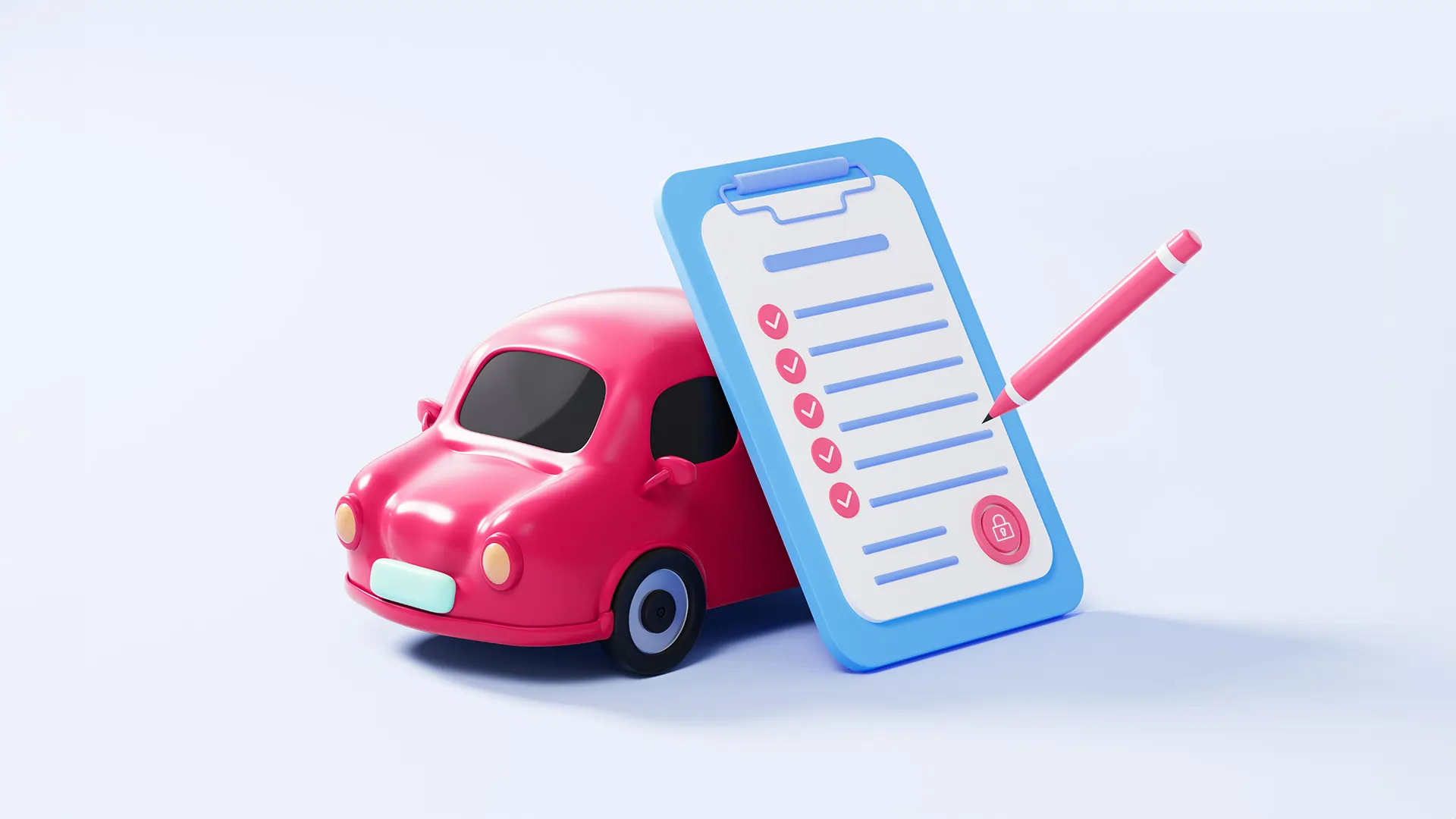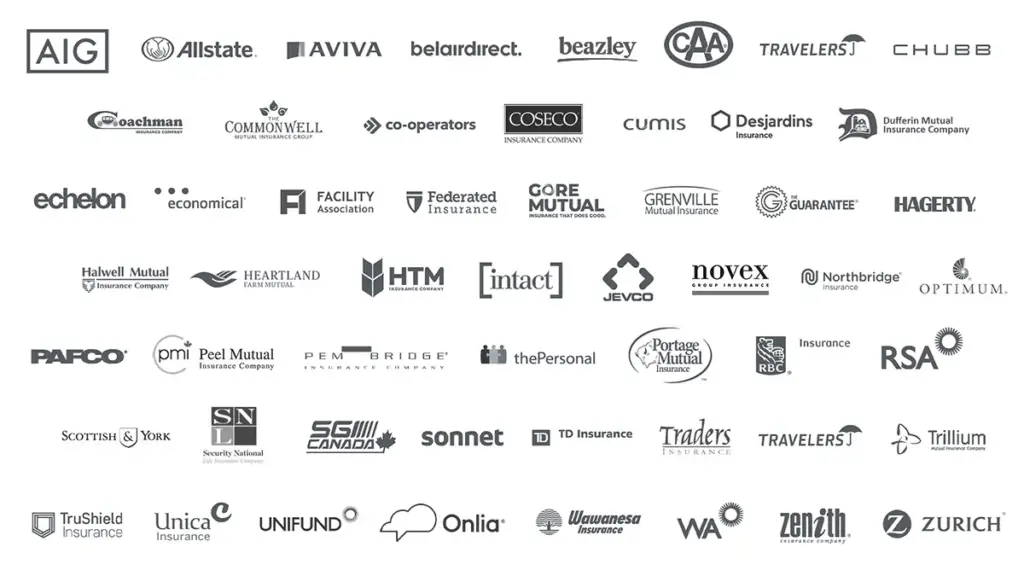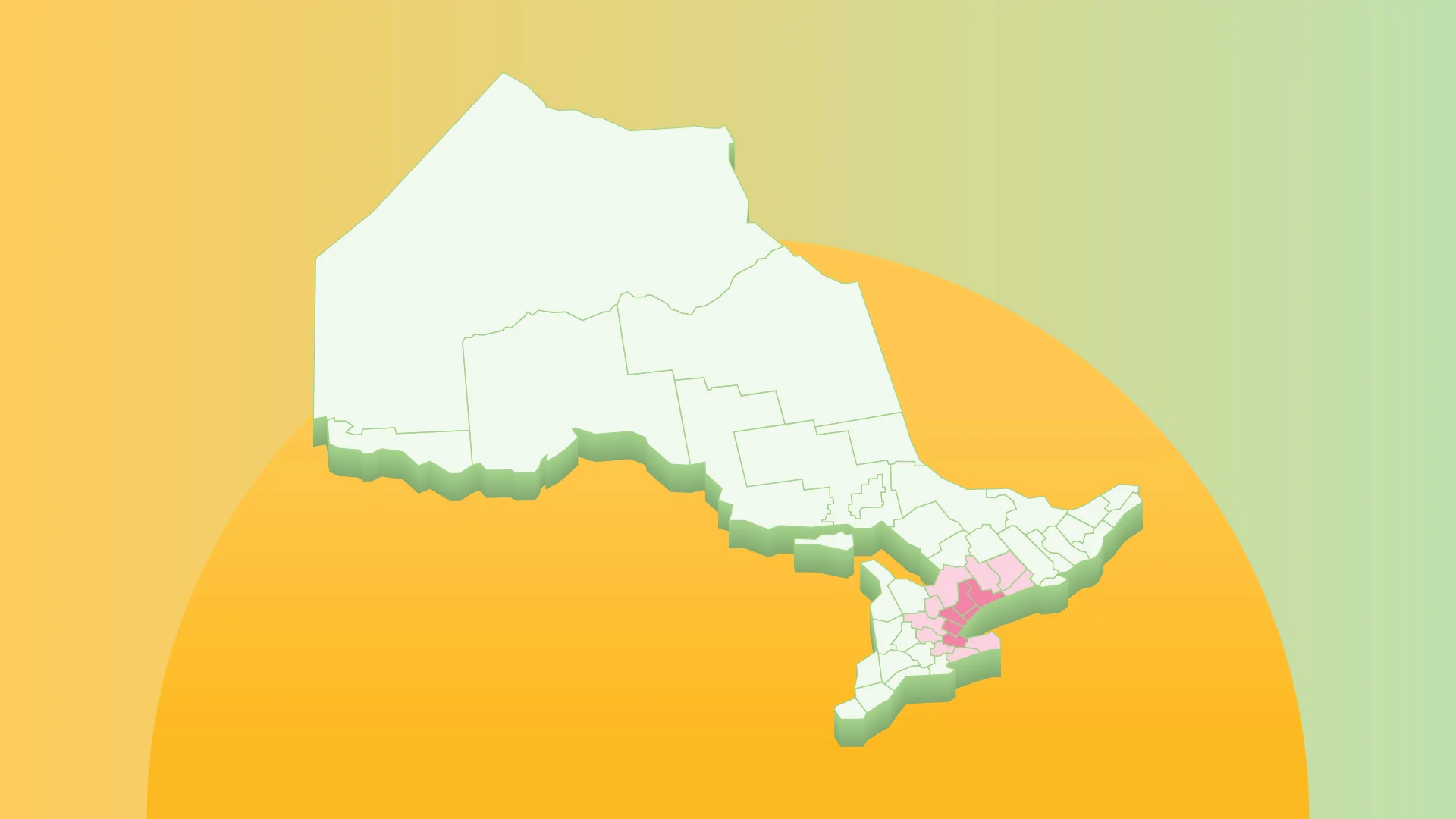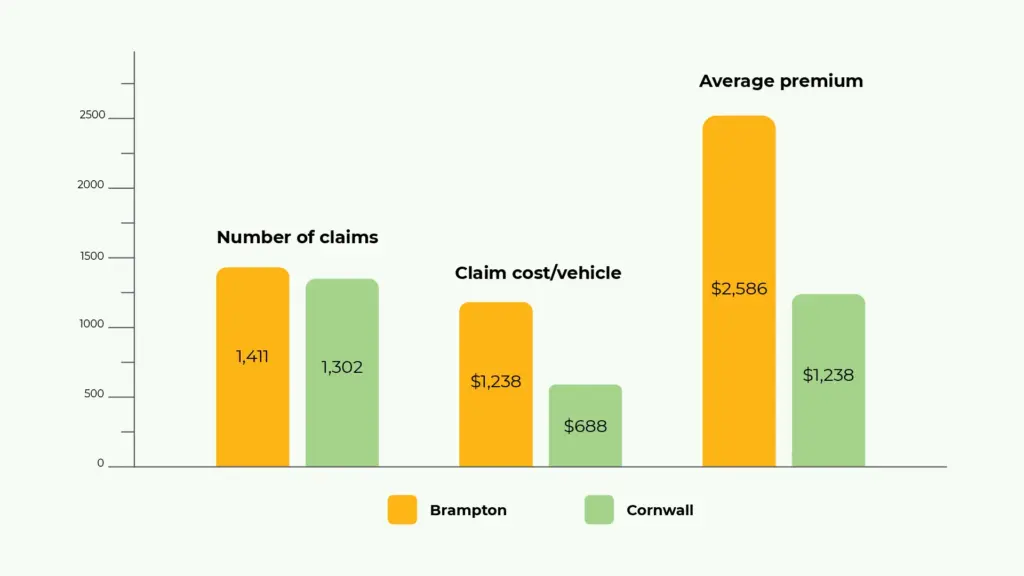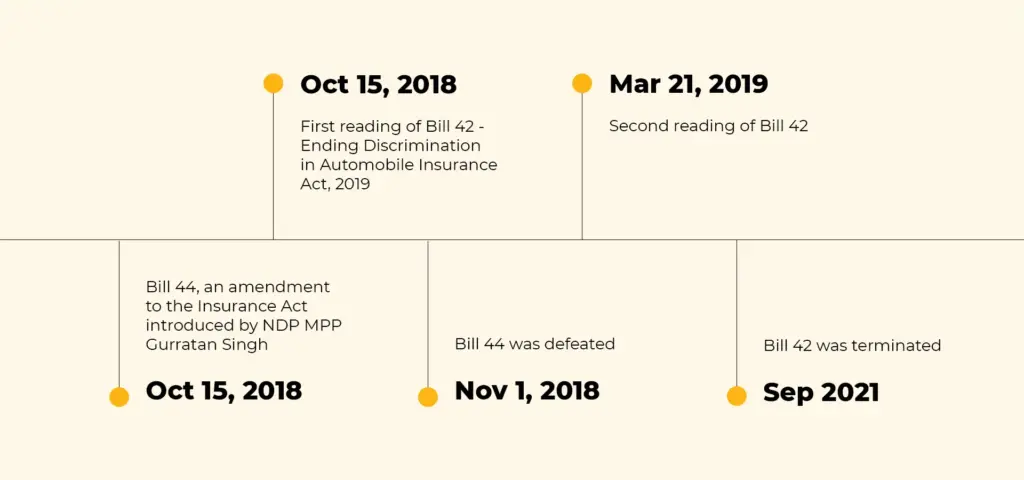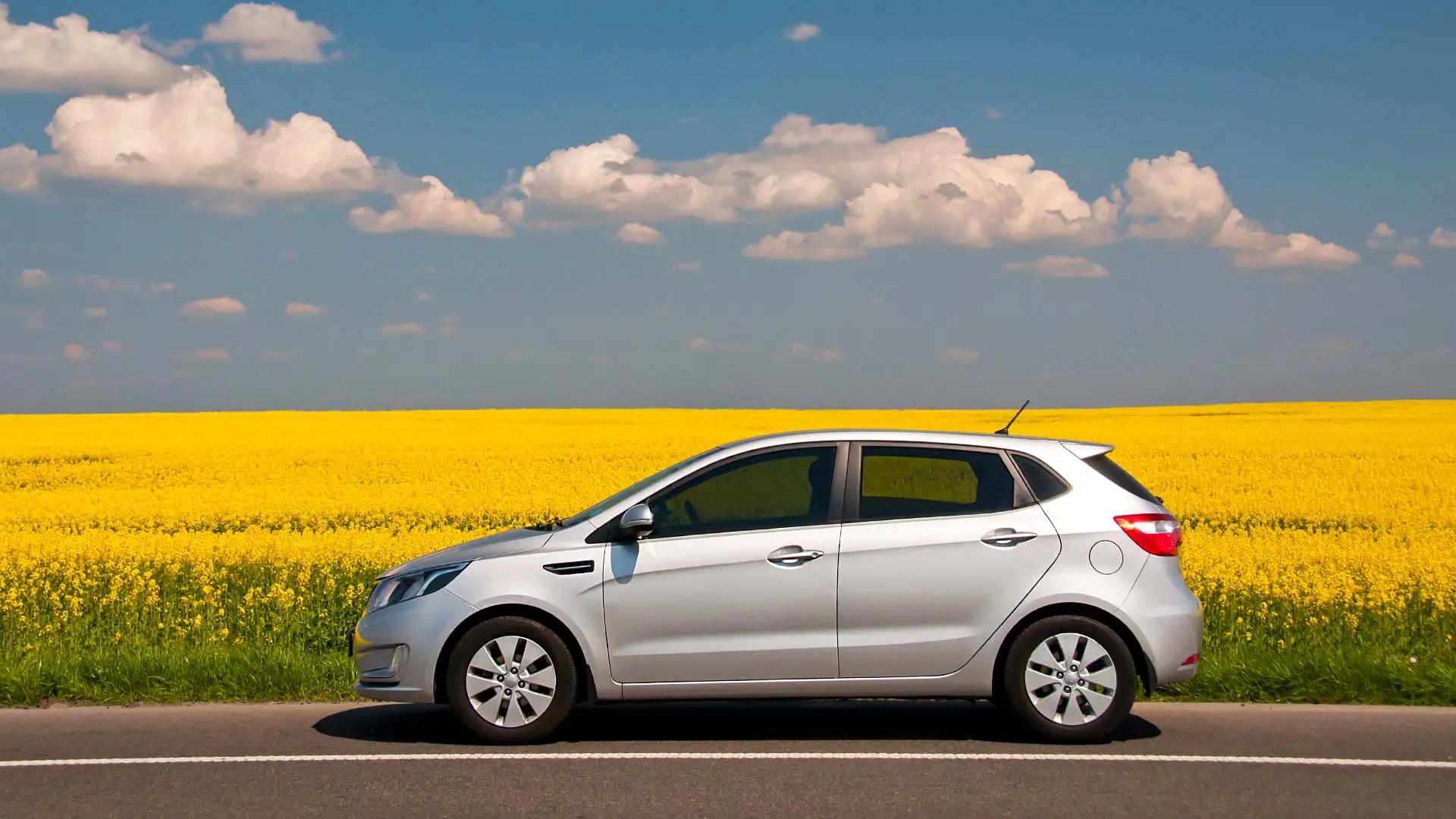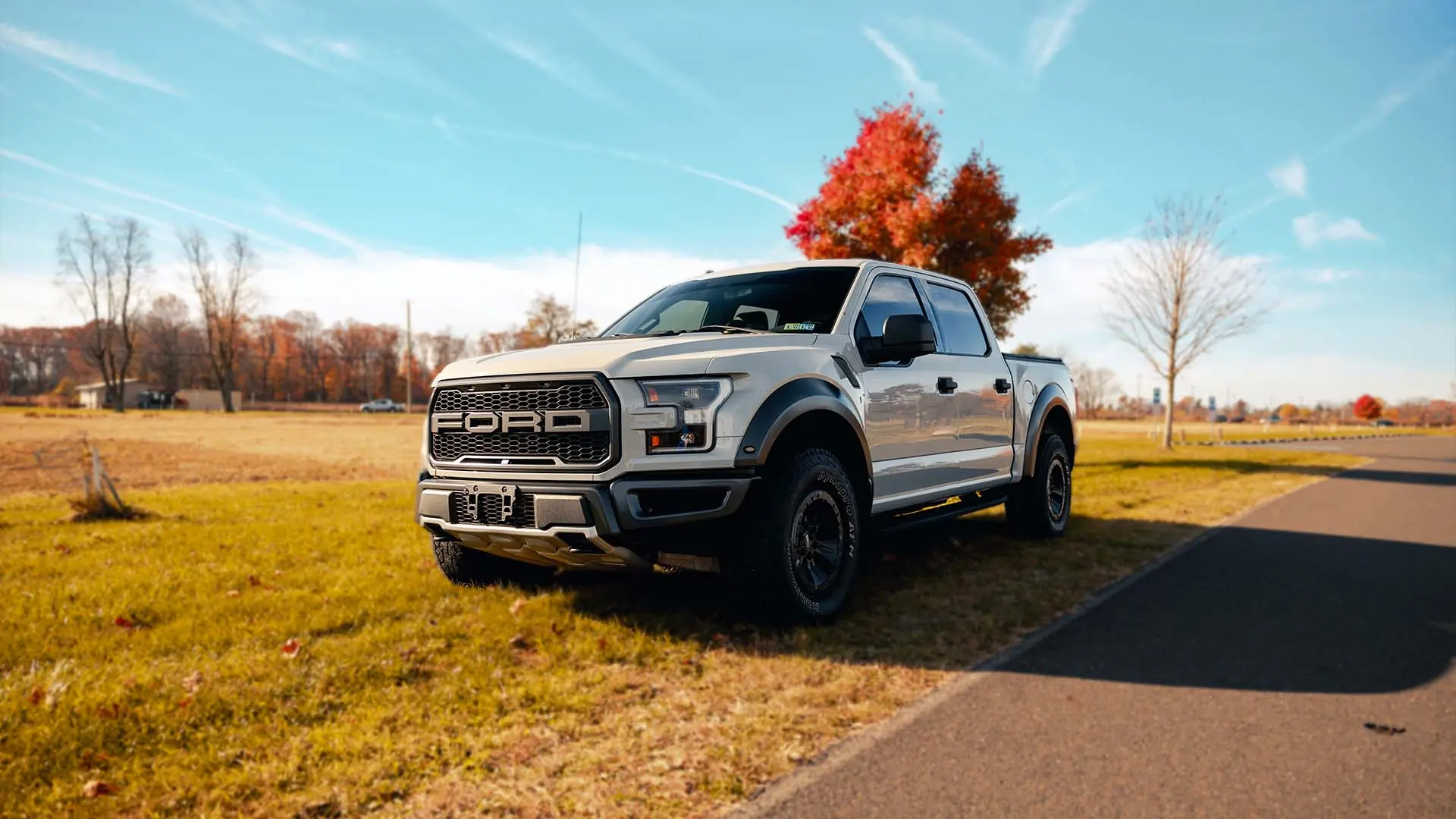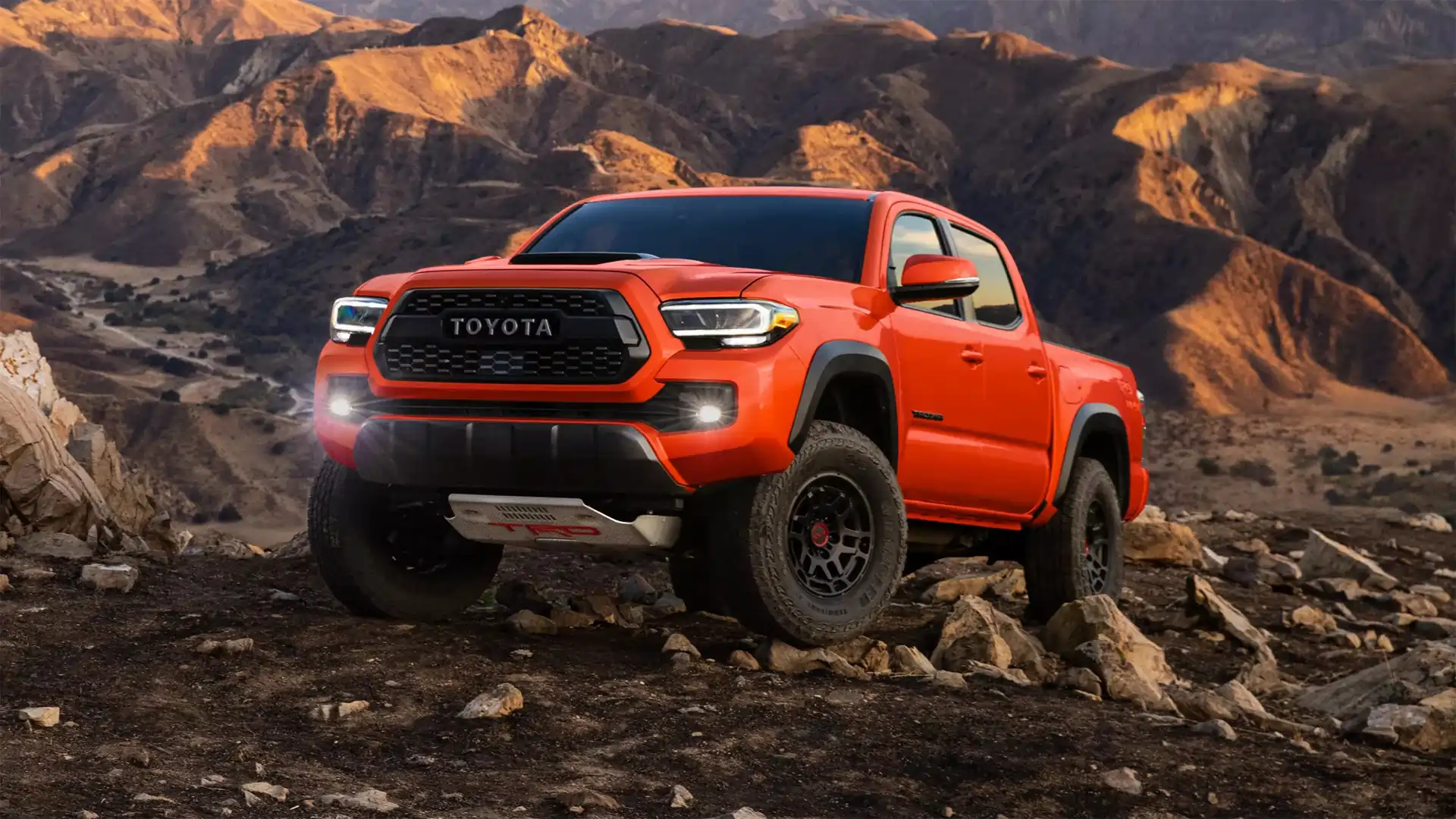See the latest version of this post: The best car insurance companies in Ontario for 2025
Car insurance is so nuanced nowadays that it’s difficult to know which insurer is right for you. Every company boasts the “cheapest rates,” but price is just one thing to consider when it comes to choosing a provider. Ontario has about 8.7 million motor vehicles that are registered, according to StatCan, with Ontario and Quebec accounting for more than half of vehicle registrations in Canada. That all said, there’s a lot of auto insurers in Ontario, making for a more difficult time in choosing the best one.
Here’s a total breakdown of the best auto insurers in Ontario, including what different types of auto insurers exist, how they rank by price, coverage options, and more.
- What makes an auto insurer “the best?”
- Ontario auto insurers at a glance
- Who is the best auto insurer in Ontario?
- Best auto insurance companies by demographic
- Female drivers
- Male drivers
- Young drivers
- Older drivers
- Drivers with clean records
- Looking beyond cheap car insurance
- Insurers for all types of drivers
What makes an auto insurer “the best?”
How do you gauge how good an insurance company is? Every company is different, but often what makes an insurer “the best” is how well they:
- Can meet your needs
- Provide unparalleled customer service and claims service
- Offer rates that fit within your budget.
Ontario auto insurers at a glance
There’s no real place that does a total comparison between different insurers, so we’ve done our best to create one. Please keep in mind that we’re only able to get pricing information for the insurance companies that we work with.
Table 1. Ontario auto insurance companies compared
| Insurance Company |
Type of Insurance Sold |
How to Buy1 |
J.D. Power Rating2 |
Google Rating3 |
Size (by premiums) |
| AIG Canada |
Business |
Broker |
|
1.8 / 5
(46) |
Small |
| Allstate Insurance Co. of Canada |
Regular, motorcycle |
Agent, Direct |
762/1000 |
4.2 / 5
(2,642) |
Medium |
| Aviva Canada |
Regular, motorcycle, specialty, business, ridesharing |
Broker |
751/1000 |
3.9 / 5
(2,466) |
Large |
| Belairdirect |
Regular, ridesharing |
Broker |
779/1000 |
4.2 / 5
(5,584) |
Large |
| Beazely Canada |
Business |
Broker |
|
5 / 5
(1) |
Small |
| CAA Insurance |
Regular |
Broker |
|
4.2 / 5
(5,280) |
Medium |
| Travelers Essential |
Regular |
Broker |
|
2.1 / 5
(181) |
Small |
| Chubb Insurance Co. of Canada |
Business |
Broker |
|
2.6 / 5
(111) |
Small |
| Coachman Insurance Co. |
High-Risk |
Broker |
|
3.1 / 5
(21) |
Small |
| Commonwell Mutual Insurance Group |
Regular, business |
Broker |
|
2.9 / 5
(70) |
Small |
| The Co-operators Insurance |
Regular, business |
Direct |
809/1000 |
4.3 / 5
(3,409) |
Large |
| Coseco Insurance |
Regular |
Broker |
|
2.9 / 5
(142) |
Small |
| CUMIS |
Regular |
Broker |
|
2.5 / 5
(75) |
Small |
| Desjardins Insurance |
Regular, motorcycle |
Agent, Direct |
748/1000 |
4.8 / 5
(12,830) |
Large |
| Dufferin Mutual Insurance Co. |
Regular, business |
Broker |
|
2.9 / 5
(10) |
Small |
| Echelon Insurance Co. |
High-Risk, motorcycle, specialty |
Broker |
|
1.7 / 597
(75) |
Medium |
| Economical Insurance |
Regular, High-risk, business |
Broker |
793/1000 |
2.1 / 5
(647) |
Large |
| Facility Association |
High-Risk, motorcycle, specialty |
Broker |
|
1.9 / 5
(9) |
Medium |
| Federated Insurance |
Regular, business |
Broker |
|
4.3 / 5
(41) |
Small |
| Gore Mutual Insurance Co. |
Regular, business |
Broker |
|
2.7 / 5
(373) |
Medium |
| Grenville Mutual Insurance Co. |
Regular |
Broker |
|
3.7 / 5
(32) |
Small |
| The Guarantee Co. |
Regular |
Broker |
|
2.2 / 5
(14) |
Small |
| Hagerty |
Specialty |
Broker |
|
4.5 / 5
(260) |
Small |
| Halwell Mutual Insurance Co. |
Business |
Broker |
|
3.8 / 5
(12) |
Small |
| Heartland Farm Mutual Inc |
Regular |
Broker |
|
3.4 / 5
(61) |
Small |
| HTM Insurance Co. |
Business |
Broker |
|
4.2 / 5
(14) |
Small |
| Intact Insurance |
Regular, motorcycle, specialty, business, ridesharing |
Broker |
768/1000 |
3.2 / 5
(1,381) |
Large |
| Jevco Insurance |
High-Risk |
Broker |
|
2.6 / 5
(175) |
Medium |
| Novex Insurance Co. |
Regular |
Broker |
|
1.3 / 13
(6) |
Small |
| Northbridge Insurance |
Regular, business |
Broker |
|
3.7 / 5
(270) |
Medium |
| Optimum General Insurance |
Regular |
Broker |
|
3.1 / 5
(16) |
Small |
| Pafco Insurance |
High-Risk |
Broker |
|
1.9 / 5
(138) |
Medium |
| Peel Mutual Insurance Co. |
Regular, business |
Broker |
|
2.6 / 5
(32) |
Small |
| Pembridge Insurance Co. |
Regular, motorcycle |
Broker |
|
1.7 / 5
(591) |
Medium |
| The Personal |
Regular, motorcycle |
Broker |
798/1000 |
3.1 / 5
(725) |
Small |
| Portage Mutual Insurance |
Regular, business |
Broker |
|
3 / 5
(10) |
Small |
| RBC Insurance |
Regular |
Direct |
794/1000 |
3.5 / 5
(525) |
Medium |
| RSA Canada |
Regular, motorcycle, business |
Broker |
|
2.6 / 5
(80) |
Medium |
| Scottish & York |
Regular |
Broker |
|
1 / 5
(1) |
Small |
| Security National |
Regular |
Direct |
|
– |
Large |
| SGI Canada |
Regular |
Broker |
|
3.4 / 5
(271) | Small |
| Sonnet Insurance |
Regular |
Direct |
|
– |
Large |
| TD General Insurance |
Regular, motorcycle |
Direct |
763/1000 |
3.3 / 5
(2,378) |
Large |
| Traders General Insurance Co. |
Regular |
Broker |
|
– |
Small |
| Travelers Canada |
Regular, motorcycle, specialty, business |
Broker |
779/1000 |
2.1 / 5
(225) |
Medium |
| Trillium Mutual Insurance Co. |
Regular, business |
Broker |
|
3.3 / 5
(28) |
Small |
| Trushield Insurance |
Regular, business |
Broker |
|
4.3 / 5
(212) |
Small |
| Unica Insurance |
Regular, business |
Broker |
|
4.1 / 5
(185) |
Small |
| Unifund Assurance |
Regular |
Broker |
|
– |
Small |
| Onlia Insurance (Onlia) |
Regular |
Agent |
|
3.4 / 5
(417) |
Small |
| Wawanesa Insurance |
Regular, business |
Broker |
751/1000 |
1.9 / 5
(402) |
Medium |
| Western Assurance |
Regular |
Broker |
|
2 / 5
(18) |
Small |
| Zenith Insurance Co. |
Regular, motorcycle |
Broker |
|
1.4 / 5
(19) |
Small |
| Zurich Canada |
Business |
Broker |
|
4.5 / 5
(18) |
Small |
| 1Agents sell through a network of agents that only sell their products. Brokers sell through independent brokers, who also offer quotes from other insurance companies. Direct means they sell directly to the public, usually online or by phone; 2Overall customer satisfaction index ranking, Ontario region – J.D. Power 2019 Canada Auto Insurance Satisfaction Study. (Note: J.D. Power Ratings are only available for companies that got a minimum of 100 responses from the consumer survey); 3Average Google rating for all Ontario locations as of August 2023. |
Who is the best auto insurer in Ontario in 2023?
Because auto insurance premiums are based on many different factors that are unique to you, there is no one “best” auto insurer in Ontario for everyone. Even if your next-door neighbour, Brad, tells you he’s with the best auto insurance company, that doesn’t mean that same insurer will be who is best for you. Brad could have gotten a great price on his insurance because of his driving experience, the value and age of his vehicle, the distance of his daily commute, and many other factors that are unique to him.
Table 2. Average Ontario auto insurance rates for male, female, and senior drivers1| Insurance company | Rates for females | Rates for males | Rates for females under 252 | Rates for males under 25 | Rates for drivers over 65 |
|---|
| Aviva | $2,261 (4) | $2,573 (5) | $4,230 (1) | $3,092 (2) | $2,172 (3) |
| CAA | $1,909 (1) | $1,855 (1) | $4,671 (3) | $4,122 (6) | $1,759 (1) |
| Gore Mutual | $2,605 (6) | $2,582 (6) | $5,042 (5) | $4,611 (8) | $2,236 (4) |
| Intact | $2,397 (5) | $2,392 (4) | $4,981 (4) | $2,986 (1) | $2,624 (7) |
| Pembridge | $2,251 (3) | $2,369 (3) | $5,078 (6) | $3,420 (3) | $2,611 (6) |
| SGI Canada | $2,185 (2) | $2,181 (2) | $4,601 (2) | $3,649 (5) | $2,068 (2) |
| Travelers | $2,974 (7) | $3,123 (8) | $5,949 (8) | $3,547 (4) | $4,478 (8) |
| Wawanesa | $3,029 (8) | $2,893 (7) | $5,777 (7) | $4,368 (7) | $2,382 (5) |
| 1Data source: Mitch auto insurance quoter (ranked by price in parentheses) ;2Rates for younger females are typically lower than those for young males. Quotes shown are higher because of the specific driver profiles chosen. |
The table above should give you an idea of how different ages and genders with the exact same vehicle and rough annual mileage can produce entirely different price points depending on the individual insurer.
Get an auto insurance quote in a few short steps.
Best auto insurance companies by demographic
Because different insurance companies are going after different kinds of customers, there’s no one company that offers the best rates for all drivers. Even if your cousin Joey tells you that his insurer is the cheapest, they may be the cheapest for him, but not for you.
The only way to find your best rate is to get a quote from as many different companies as possible. If you contact a direct insurer or an insurance agent, you will only get the price for that one insurance company. Also, note that online quotes are notoriously inaccurate. You won’t have a really good idea of actual price unless you call.
The best way to get a lot of quotes all at once is to call an independent insurance broker (preferably one that works with lots of different insurance companies and doesn’t use online quoting). Mitch represents more than 70 companies, while some other brokers only represent a handful.
To give you an idea of what you can expect from different insurers based on your gender and age, we ran a variety of quotes in our online auto insurance quoter, and found the following:
Female drivers:
- CAA Insurance has the best rates on average for female drivers.
- Different female drivers may get their best rate from different insurers. We ran quotes for 7 females and 4 different companies had the lowest quote for at least one driver (CAA, Aviva, SGI and Jevco)
Read more: The best insurance companies for female drivers in Ontario in 2024
Male drivers:
- CAA Insurance also has the best rates on average for male drivers.
- Again, a given male driver may get his best rate from any one of a number of insurers. We ran quotes for 7 male drivers and although CAA had the lowest quotes on average, 3 of the male drivers got their best quote elsewhere (SGI, Travelers and Jevco).
Read more: The best insurance companies for male drivers in Ontario in 2024
Young drivers:
- Insurance companies see male young drivers very differently than female young drivers.
- Intact Insurance has the best average rates for male drivers under 25.
- Aviva has the best rates on average for female drivers under 25.
- For younger drivers especially, it pays to get quotes from as many companies as possible. We got quotes for 12 drivers, and the best quote came from 7 different insurers (Aviva, Intact, Pembridge, SGI, CAA, Coachman and Jevco).
Read more: The best insurance companies for younger drivers in Ontario in 2023
Older drivers:
- CAA Insurance offers the best rates, on average, for drivers 65 and over in Ontario.
- Even for older drivers it pays to have a broker shop around. Five out of seven drivers we ran quotes for got their best rate with CAA, but two got a better quote elsewhere (Pembridge and Jevco).
Read more: The best insurance companies for older drivers in Ontario in 2023
Drivers with clean records
- CAA Insurance offers the best rates, on average, for Ontario drivers with clean records (9% lower than the closest competitor, Aviva).
Read more: The best insurance companies for Ontario drivers with clean records in 2023
Looking beyond cheap car insurance
An insurance broker’s job is to find you affordable coverage, yes, but they will do so by helping you save money, like finding you key auto insurance discounts. At the same time, they help you find the best coverage fit. There are more ways to rank auto insurance companies than simply by price. Here’s a few other things to keep in mind:
Online auto insurance reviews
Ratings and online reviews are a good way to see what kind of service an insurance company might offer. Of course, reviews are not solely what you should go off. This is why:
- Some customers will only leave a review if they have had a bad experience.
- Larger companies have more customers and therefore often have more negative reviews.
- Insurance can be complicated, and many people’s reviews will be based off limited knowledge of how different coverages work.
What you want to weigh is how much an insurance company might argue with you over what is covered in the event of a claim and how easy they are to get a hold of. Reviews may indicate the kind of bad experience customers have had, so pay attention to any patterns that you might notice.
Customer service studies
J.D. Power curates a customer satisfaction survey each year for auto insurance companies. Rankings may only be a general guideline, but they’re good to check out for common trends. Note, however, the following limitations:
- The surveys conducted rely on a very small sample size with a minimum of 100 respondents in order to be listed. For a province as large as Ontario, each survey would need at least a sample of 1,000 to be considered reliable.
- J.D. Power uses online panels to collect data, which can be less reliable than other means.
- The surveys are not intended for consumers, as J.D. Power provides detailed results in exchange for a fee.
- J.D. Power only has ratings for 13 of the 80-plus companies that sell auto insurance in Ontario.
Insurance company size
Something else worth looking at/considering is the volume of premiums different insurers take in.
When insurance companies are smaller, their pools of funds to payout claims are smaller. There’s the risk, then, that a smaller insurance company may not have the funds to pay out all its claims. Larger insurance companies have their risks spread out more evenly, so even a major storm that has the potential to affect thousands of people at once may still be payable. In Canada, insurers must meet certain minimum standards for financial stability, and many will purchase reinsurance to protect themselves against major events, so oftentimes it can be a better idea to get your insurance through a larger provider. This isn’t always an exact science, however, as some smaller insurers can be just as great (if not greater) at meeting your insurance needs than the big guys!
Insurers for all types of drivers
Insurers specialize in different types of risk, and we’ve included this in the chart above to show which companies are open for business in your specific category (whether that’s normal, business, motorcycle, specialty, and so on).
1. Regular market auto insurance companies
Most Ontario drivers are insured in what is known as the regular market, which means companies that offer insurance to low or medium-risk drivers who have standard vehicles without modifications, that aren’t right-hand drive or used for business purposes.
To be in the standard market, you shouldn’t have more than three tickets or at-fault accidents on your record. Tickets can stay on your record for three years, and accidents up to six. Even if you’ve only had one serious traffic-related conviction like a DUI or distracted driving, you could be placed in the high-risk market.
2. High-risk auto insurance companies
High-risk auto insurance companies provide coverage for drivers whose risk profile may be uninsurable by most standard market insurers because of multiple tickets or at-fault accidents, a serious driving conviction (DUI, street racing, driving with a suspended license) or being cancelled for non-payment.
3. Motorcycle insurance companies
Motorcycles in Ontario can be pricey to insure because accidents often involve more severe injuries, and even the potential for long-term disability. Motorcycle insurance tends to be seen as riskier, even for experienced drivers.
It becomes even more difficult to obtain insurance if you are under the age of 25 or have had less than five years of riding experience. Facility Association, in this case, could be your only option.
4. Specialty insurers
Only a few companies specialize in distributing insurance for “non-standard” vehicles. These include right-hand drive, classic or collector cars, and vehicles with significant modifications to them.
5. Business vehicle insurance companies
Using your personal vehicle to travel to and from meetings or take calls doesn’t constitute as business use so you can easily use your personal policy for this. You’ll want to always keep your insurance broker informed, but they probably won’t suggest an additional commercial auto policy.
However, if you drive a company vehicle or have a car with business branding on it and use it to transport goods, haul tools, or deliver passengers, you will need commercial insurance.
6. Ridesharing vehicle insurance companies
Using your own vehicle to drive for Uber, Lyft or other ridesharing companies, and transport either passengers or food, means that most insurers won’t want to cover you and you’ll need to acquire a policy through a separate rideshare insurance provider. Unfortunately, yes, ridesharing vehicle insurance is more expensive than personal car insurance. Don’t feel tempted to neglect telling your insurance provider about your business as that’s driving without insurance.
7. Farm vehicle insurance companies
With over 40 farm mutuals operating in Ontario, there’s quite a few options for farmers. However, some of these mutuals only operate in their immediate geographic area.
As well as farm mutuals, many of the business insurers mentioned above will also cover farm vehicles as part of a larger commercial insurance policy for your agri-business or farm.
We’ll find the best auto insurance for you
Choosing an auto insurance company that is right for you can be tough, so why not call Mitch? We are partners with some of Canada’s top providers. Not only can we help you find a company that fits the bill, but we can also help you find more affordable coverage, find you discounts, and more.

